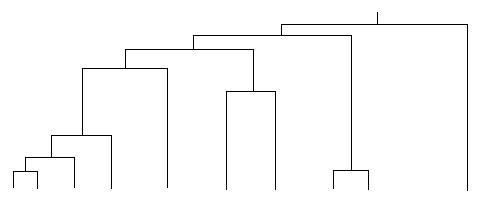Nonhierarchical Methods
Partitioning methods are to divide the data set of
N objects into M clusters, where no overlap is allowed.
Similar items are in a cluster and the cluster may be represented by a centroid or cluster representative that is indicative of the characteristics of the items it contains.
- Assign the first document
D1as the representative forC1. - For
Di, calculate the similaritySwith the representative for each existing cluster. - If
Smaxis greater than a threshold valueSt, add the item to the corresponding cluster and recalculate the cluster representative; otherwise, useDito initiate a new cluster. - If an item
Diremains to be clustered, return to Step 2.
Hierarchical Methods
Produce a nested data set in which pairs of items or clusters are successively linked until every item in the data set is connected. The hierarchical methods can be either agglomerative, with
N-1 pairwise joins beginning from an unclustered data set, or divisive, beginning with all objects in a single cluster and progressing through N-1 divisions of some cluster into a smaller cluster.
- Identify the two closest points (clusters) and combine them in a cluster.
- Identify and combine the next two closest points.
|

|